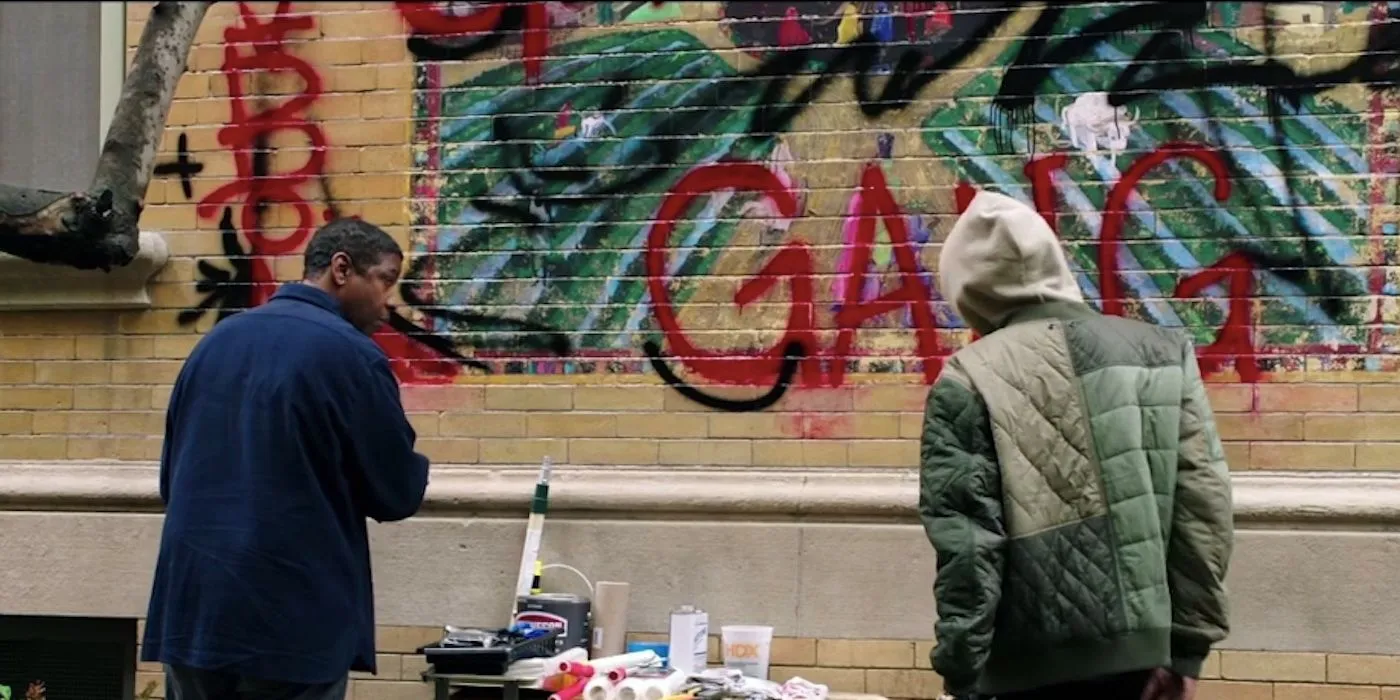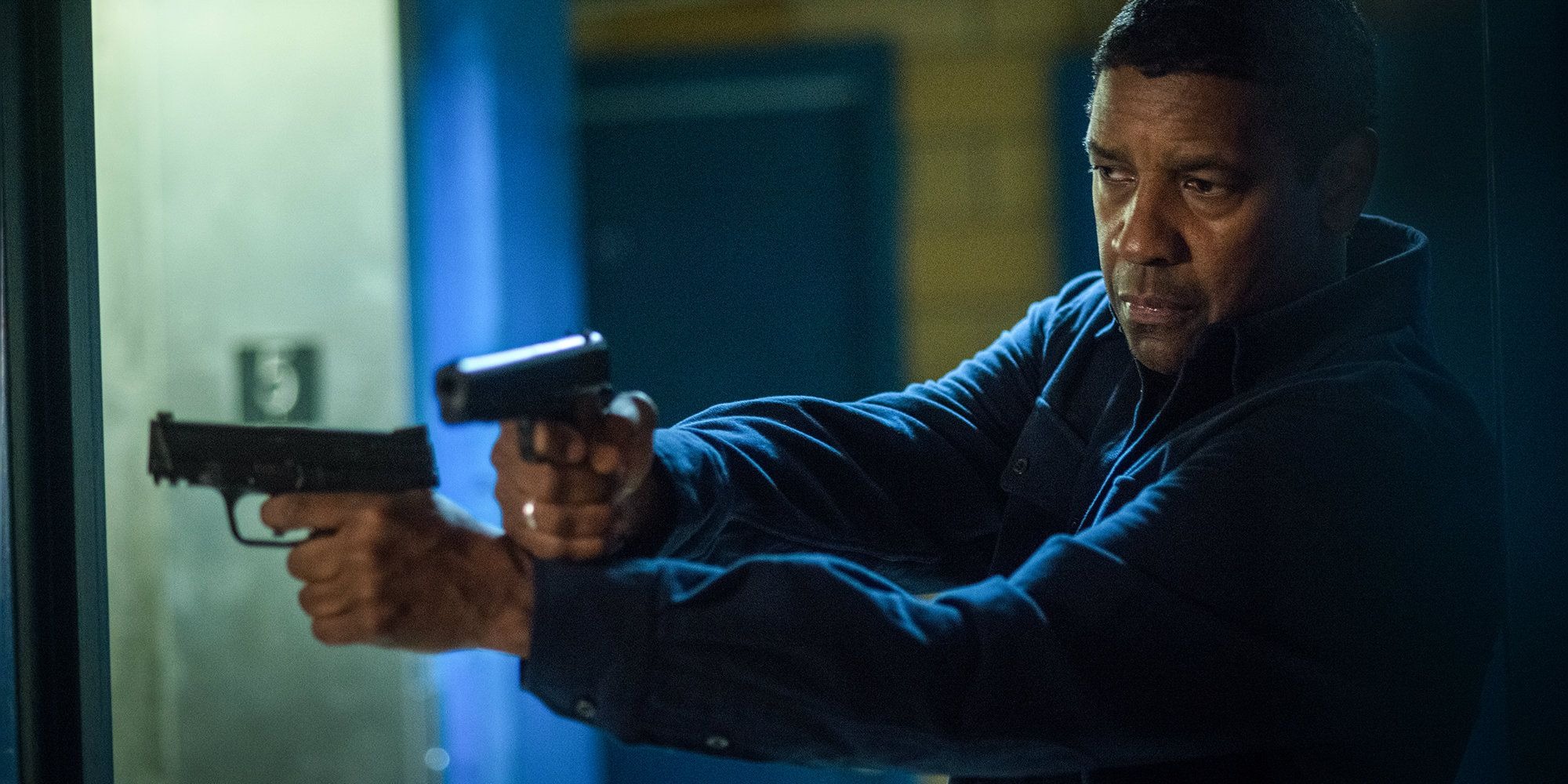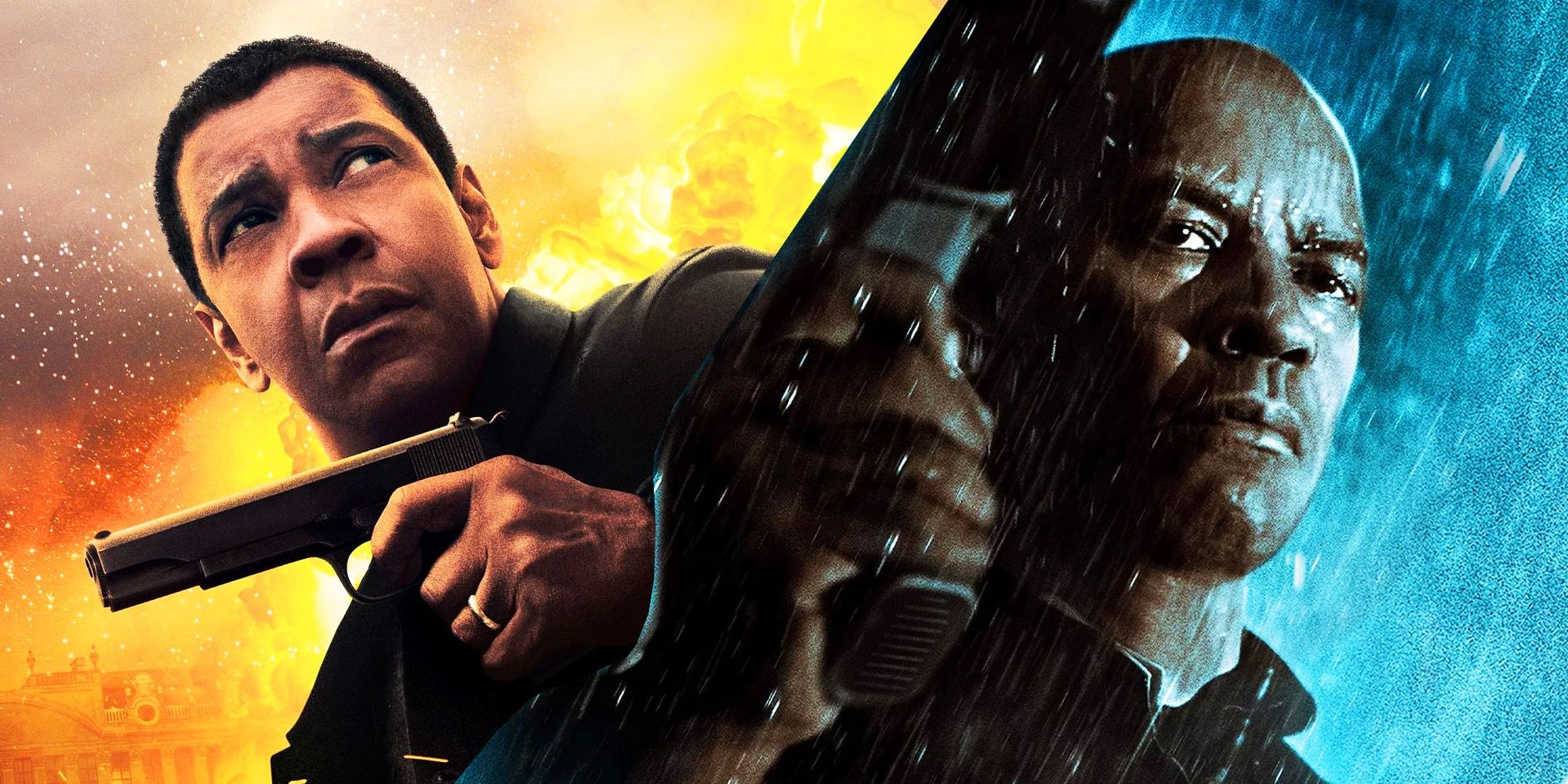The conclusion of The Equalizer 2 ties up its major storylines, but there is a deeper symbolic layer to how the sequel wraps up. The 2014 action-packed thriller introduced viewers to Robert McCall, a highly skilled former Marine who later served as a DIA operative, played by Denzel Washington.
In the original film, Robert is reluctantly drawn back into a violent world when he takes action to protect a young girl from the grip of the Russian mafia. The Equalizer 2 follows him as he investigates the murder of his close friend and former colleague, Susan Plummer, who was killed during an apparent robbery in Brussels.
As Robert and his former associate Dave York dug deeper into Susan’s death, the brutal truth behind the crime was soon uncovered. Meanwhile, a young aspiring artist named Miles took an interest in painting a mural on the wall of Robert’s apartment building.

These two storylines came together in the film’s climax when Miles was kidnapped by Susan’s murderer, forcing Robert to return to his hometown for a final confrontation.
Through these intense final moments, The Equalizer 2 provides a deeper understanding of Robert’s moral struggles, his personal conflicts, and the path that led him to dedicate his life to protecting the vulnerable.
Who Was Responsible For Susan Plummer’s Death?
Robert Escaped A Similar Fate When He Chose To Work With Dave
The shocking revelation in The Equalizer 2 was that Dave York, played by Pedro Pascal, was the one behind Susan’s murder. While he initially seemed like a loyal friend and ally, Dave was operating as a mercenary, and Susan had gotten too close to uncovering his secret.
She was on the verge of finding out that Dave was also responsible for orchestrating the murder-suicide in Brussels. Alongside his former teammates—Kovak, Ari, and Resnik—Dave turned to crime after being abandoned by the DIA, despite their years of dedicated service.
Feeling betrayed, Dave and the others conspired to eliminate Susan, and Robert was next on their list. However, Robert proved to be more cunning, drawing them into a setting where he had the upper hand.
Although Dave spent a portion of the film pretending to help Robert track down Susan’s killer, he was revealed as the mastermind behind the crime.
Robert lured them into a final showdown by using the watchtower in his coastal hometown as his base. Taking advantage of a raging storm, he eliminated Dave’s men one by one before engaging in a direct confrontation with Dave himself.
Robert figured out the truth after noticing Dave’s number on the call log of an assassin sent to kill him. As a result, The Equalizer 2 escalated into a brutal and suspenseful showdown.
Dave and his associates abducted Miles, drawing Robert back to his seaside hometown, where he took them down under the cover of a violent storm before facing off against Dave in a decisive battle.
Why Robert Eliminated Kovak, Ari, And Resnik
Taking Out Dave’s Men Cleared The Path For The Final Fight
To weaken his adversaries before the final battle, Robert systematically eliminated Kovak, Ari, and Resnik using a combination of stealth and ingenuity. He used a speargun, knives, and even an explosion triggered by dust to take them out one by one.
From a tactical standpoint, this ensured that Robert would not have to face multiple opponents at once. On a deeper level, eliminating them represented his need to sever ties with his past.
Like Dave and the rest of the team, Robert had once felt betrayed by the government he served. They had all endured the same hardships and disappointments. By taking them down, Robert prevented himself from slipping into the same destructive mindset that had turned them into ruthless mercenaries.
The Meaning Behind Dave York’s Death
Dave’s Death Was A Pivotal Moment For Robert
During their final battle, Robert used Dave’s own knife against him, slowly driving the blade into his former friend. Both men had been trained in the same deadly combat techniques, but they had chosen different paths in life.
Dave allowed his bitterness and resentment to consume him, leading him to betray everything they once stood for. Robert, on the other hand, used the encounter as an opportunity to reject vengeance.
This was Denzel Washington’s first time returning for a sequel, and the gravity of The Equalizer 2’s ending sheds light on why. By killing Dave, Robert made a conscious decision to turn away from a life of bloodshed motivated by anger. Instead, he sought a deeper sense of purpose, something he had struggled to find after the events of the first film.
Why A Hurricane Was Included In The Ending
The Storm Served As A Heavy-Handed Symbol Of Robert’s Inner Conflict
The hurricane that raged through Robert’s hometown during The Equalizer 2’s climax was not just a dramatic backdrop—it was an external representation of the turmoil inside him.
Susan’s murder forced Robert to confront painful memories of his past, shaking his sense of identity and purpose. The storm reflected this emotional upheaval, illustrating how the world he had built for himself was being torn apart.
On a broader level, the hurricane underscored the idea that true peace is difficult to attain for someone with Robert’s past. Returning to his childhood home was not enough to erase the violence he had experienced. Instead, he had to face the painful reality that he had once been a part of the same group that had now turned against him.
The Symbolism Behind Miles’ Mural
Robert Recognized The Importance Of Community
At the end of the film, Miles completed his mural on the side of Robert’s apartment building. The artwork depicted a peaceful rural community working together, mirroring the small garden that the residents of the apartment complex had nurtured.
More than just a piece of art, the mural represented healing, unity, and the idea that people can rebuild their lives through collective effort. Robert’s decision to take Miles under his wing reflected his desire to embrace a more community-focused way of life.
He saw in the young artist a chance to guide someone toward a positive future, something he had failed to do for his former teammates. The mural stood as a reminder that even in a world filled with violence, there is still room for growth and redemption.
The Deeper Meaning Behind The Equalizer 2’s Ending
The Sequel’s Conclusion Focuses On Redemption And Choosing A Different Path
Although The Equalizer 2 does not end on a tragic note, there is an underlying sense of sorrow. Robert successfully reunites a Holocaust survivor with his long-lost sibling, demonstrating his commitment to helping others. However, he is unable to convince Dave to abandon his destructive path.
As the saying goes, “It is easier for a camel to pass through the eye of a needle than for a rich man to enter the kingdom of God.” Robert came to terms with this when he found it easier to eliminate Dave than to change his perspective.
The film’s final moments emphasize the choices that shaped Robert’s journey. He could have easily followed the same dark road as Dave, Kovak, Ari, and Resnik, but he fought against that fate.
By mentoring Miles and steering him toward a different future, Robert ensured that at least one young man would not repeat the mistakes of his past. Still, the weight of his failures lingered—he could not save his former comrades, and in the end, he was the one who had to put an end to their lives.
How The Equalizer 2 Connected To The Equalizer 3

Susan’s Daughter Played An Important Role In The Next Chapter
With The Equalizer 3 arriving in 2023, the story of Robert McCall continued, forming a trilogy. The events of the second film had a direct impact on the third, particularly through the loss of Susan Plummer.
Her daughter, Emma Collins, was introduced in The Equalizer 3 as Robert’s new CIA contact. This connection allowed Robert to alert the agency about the criminal drug trade in Altamonte, the small Italian town where he sought a peaceful life.
Another link between the two films was the introduction of Greg Dyer. Some viewers speculated that he had appeared in The Equalizer 2, but he was actually a new addition in the third installment.
The overarching theme tying the two movies together was Robert’s search for peace. The personal growth he achieved in The Equalizer 2 led him to Altamonte, where he hoped to leave behind his violent past.
How The Equalizer 2 Was Received
The Film Earned A Mixed Response
Critical and audience reactions to The Equalizer 2 were divided. While opinions varied on the film itself, there was widespread agreement that Denzel Washington delivered another strong performance.
The climactic battle set against the hurricane was a particularly memorable moment for viewers, even if some found the symbolism excessive.
Despite some criticisms, the film’s ending left a lasting impression, reinforcing why Washington was the right choice for a sequel and keeping audiences interested in the next chapter of Robert McCall’s journey.



